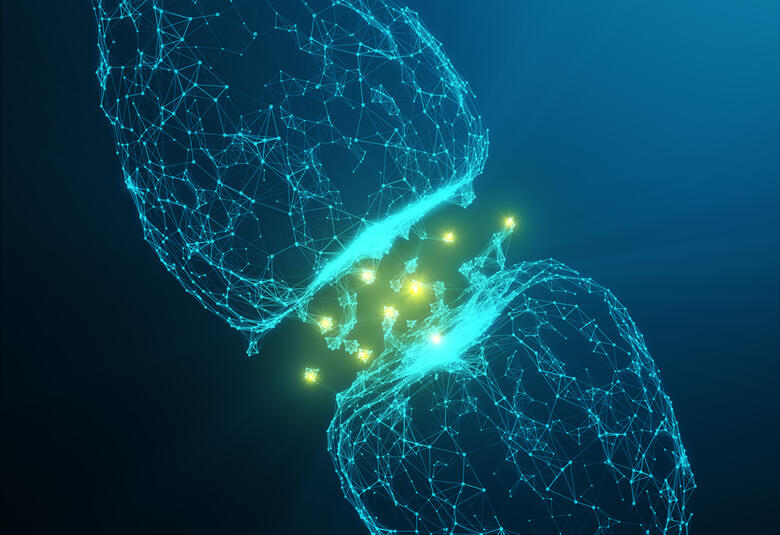Initiating and optimizing treatment for patients with Major Depressive Disorder
During The 27th Emirates Mental Health Society International Congress Cognitive, Behavior & Emotional held in Dubai, UAE (29 September to 1 October 2023), a luminary symposium titled "Initiating and optimizing treatment for patients with Major Depressive Disorder" was helmed by Professor Allan Young, Head of School, Academic Psychiatry; Director, Centre for Affective Disorders, at the Institute of Psychiatry, Psychology & Neuroscience (IoPPN), King's College London. Professor Young’s comprehensive exposition laid bare the often neglected issues of anhedonia, emotional blunting, and low motivation, a challenging consequences often observed in Major Depressive Disorder and also in SSRI/SNRI treatment regimes.
The Multi-dimensional Maze of Major Depressive Disorder
Major Depressive Disorder (MDD) is a multi-faceted psychological condition that leaves an indelible imprint on the lives of its sufferers.1 With its heterogeneous nature, it unfolds through three distinct symptom domains – emotional (including sadness, anxiety, emotional blunting, anhedonia, panic or anguish, lack of motivation, hopelessness, and suicidal thoughts)2-4, cognitive (including attention and concentration, short- and long-term memory, decision-making, and planning and organisation)5-7, and physical (including eating/weight changes, sexual dysfunction, and psychomotor agitation) 2, each of which significantly diminishes an individual's quality of life. By delving into these domains, we edge closer to comprehending the labyrinthine nature of MDD, a crucial step towards devising effective treatment modalities.
Emotional Entanglements: Anhedonia and Emotional Blunting as Silent Afflictors
Among the emotional quagmires of MDD, anhedonia, emotional blunting, and low motivation stand as prominent figures. These aspects suffocate the essence of joy and desire, entrapping individuals in a seemingly endless cycle of despair. The statistics paint a dire picture: 46 to 60% of patients treated for depression exhibit emotional blunting8,9, while a staggering 75% report experiencing anhedonia10, and about 30% of patients treated with a selective serotonin reuptake inhibitor (SSRI) have some form of avolition.11 The pervasive nature of these symptoms extends a clarion call for the need to address emotional dysregulation in MDD treatment plans.
Emotional blunting significantly escalates the risk of treatment discontinuation for patients with MDD, acting as a silent saboteur in the therapeutic journey. Its pronounced effect on decision-making contours the path of treatment adherence, often veering individuals off the course of recovery.12 A notable study encompassing 316 MDD patients unveiled a glaring reality: a substantial 35% of individuals discontinued their treatment, attributing to the numbing clutches of emotional blunting.13
Healing or Feeling? The SSRI/SNRI Dilemma of Emotional blunting with MDD patients
The landscape of treating MDD with SSRI/SNRI medications often unveils a lesser-discussed yet significant phenomenon of emotional blunting. A survey involving 161 MDD patients on an SSRI regimen divulged that 46% encountered a narrowing of emotion, 21% found themselves unable to cry, and 19% reported a pervasive sense of apathy.14 The revelation doesn't stop here; a much larger online survey of 1829 SSRI/SNRI-treated individuals echoed the sentiment, with about two-thirds reporting emotional blunting as a conspicuous side effect during their treatment journey.15 This intriguing juxtaposition raises a pivotal question: does the association of emotional blunting with SSRI/SNRIs reflect a shortfall in addressing the emotional symptoms of MDD, or is it a side effect of the treatment itself?16
Bridging the Emotional Gap: Multimodal Antidepressants’s Effect on Emotional Blunting, Anhedonia, and Lack of Motivation
The efficacy of multimodal antidepressants, particularly their positive influence on dopamine, showcases a promising avenue in mitigating emotional blunting often encountered in SSRI/SNRI treatments for MDD. The underlying mechanism, potentially tied to the global serotonin elevation which inadvertently dampens dopamine activity, finds a plausible counter with multimodal antidepressants lower serotonin transporter (SERT) occupancy yet effective antidepressant action via engagement with other receptors like 5-HT3.17,18 This nuanced interaction not only sheds light on the emotional blunting conundrum but introduces a hopeful candidate in enhancing treatment response, thus improving the quality of life for those grappling with MDD. In a meticulous 8-week study, partial responders to SSRI/SNRI therapy were transitioned to a regimen of multimodal antidepressants. A marked alleviation in emotional blunting was documented, accompanied by notable advancements in cognitive performance and overall functionality. The scoring on standard depression and emotional blunting scales depicted a significant drop, exemplifying multimodal antidepressants' potential in not only addressing emotional numbness but elevating the therapeutic response in MDD, thereby broadening the horizon for more comprehensive treatment modalities. Additionally, multimodal antidepressants significantly improve motivation, energy, cognitive performance, and overall functioning.18 This improvement of anhedonia correlates with improvements in general function and quality of life.18 So, multimodal antidepressants could significantly relieve anhedonia, emotional blunting, and low motivation, the prominent figures of MDD.



